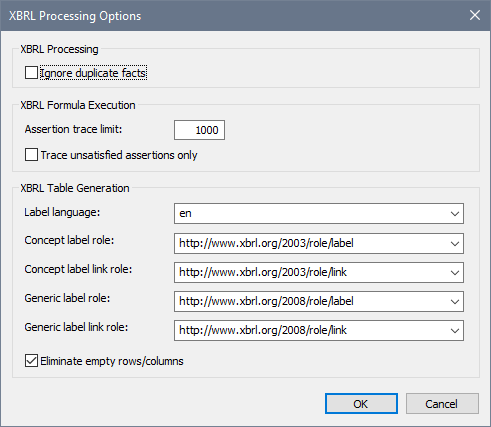Processing Options
The XBRL Processing Options command displays the XBRL Processing Options dialog (screenshot below). Here you can specify:
•that duplicate facts are ignored for: (i) XBRL formula execution, (ii) XBRL table generation, (iii) Inline XBRL transformations
•for XBRL formula executions, (i) the trace limit for assertions, and (ii) whether only unsatisfied assertions are traced or whether both satisfied and unsatisfied assertions are traced
•label settings for XBRL table generation
•that empty rows and columns are eliminated during XBRL table generation

Note: The XBRL Processing Options dialog can also be accessed from the XBRL Formula Execution dialog and XBRL Table Generation dialog.
Note about de-duplication
Only the following types of duplicate fact are ignored: (i) complete duplicates, and (ii) consistent duplicates. The fact (among the duplicates) that is selected (not ignored) is the most precise one. For example, among consistent duplicates of a numeric fact, the fact with the highest numeric precision is selected.
For more information about duplicates, see the Handling Duplicate Facts in XBRL and Inline XBRL 1.0 specification.